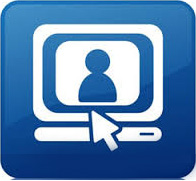


Although advancements in telemental health (TMH) technologies have rapidly reduced obstacles for their use, significant barriers remain that “plague” the diffusion of TMH from the provider’s perspective, finds an article in the peer-reviewed journal Telemedicine and e-Health. According to the article, these barriers fall into three categories: personal; clinical workflow and technology; and licensure, credentialing and reimbursement.
Among the personal barriers cited in the article, many providers are concerned that TMH will inhibit their ability to effectively establish rapport and cultivate a successful clinical relationship with patients, and that successful treatment outcomes may be inhibited by the lack of proximity between that clinician and the provider. However, despite providers’ initial concerns, the authors determine that “confidence and buy-in can be significantly improved when clinicians are given the opportunity to actually use telehealth.”
Other personal barriers for TMH raised concern clinician training for delivering technology-based medical care. “Several reports cite providers’ concern about their own lack of formal instruction prior to using TMH, with one survey citing that only about half of practitioners using TMH felt adequately trained,” the authors said.

When it comes to clinical workflow and technology barriers, the authors said that the emergence of high-quality desktop videoconferencing tools may improve the attractiveness of telehealth practice. “If providers can conduct secure videoconferencing using their desktop computer, then they can conduct video consultations in the same room where they provide in-person care,” the authors said. “Providers can alternate between in-person and telehealth patients, more easily integrating it into the normal workflow of their clinic. Desktop innovations would also reduce the scheduling difficulties that plagued TMH when a single dedicated room and equipment was shared between multiple providers.”
TMH is also confronted with significant licensure, credentialing and reimbursement barriers. The problem, as the article points out, is that clinical practitioners need to be licensed in each state in which they practice telemedicine as well as a license in the state in which they physically practice medicine. “This is not only a difficult and time-consuming task, but it can be expensive as well,” state the authors. “Provider credentialing considerations are similar to the licensing barrier. That is, TMH providers must be credentialed in each hospital or clinic in which a patient is seen.”
To help address the licensure problem, in January 2012 the American Telemedicine Association (ATA) sponsored a briefing on Capitol Hill to discuss telehealth licensure issues and inform members of Congress about current state-based licensing systems. House Bill 6719, the Telehealth Promotion Act, was introduced recently in the 112th Congress, proposing a new federal standard in which providers in all federal health plans would only need to be licensed in their physical state in order to care for eligible patients anywhere in the nation. However, the bill died in committee and there are no current efforts to revive it, according to the article.
Last month, ATA published best practices for providing mental health services through personal computer webcams and other devices with interactive video capabilities. The document–“Practice Guidelines For Video-Based Online Mental Health Services”–was developed with input from groups such as the American Psychiatric Association, the American Counseling Association and the National Association for Social Workers, as well as payers, academics, technical engineers and others.
Be a part of Elets Collaborative Initiatives. Join Us for Upcoming Events and explore business opportunities. Like us on Facebook , connect with us on LinkedIn and follow us on Twitter , Instagram.












